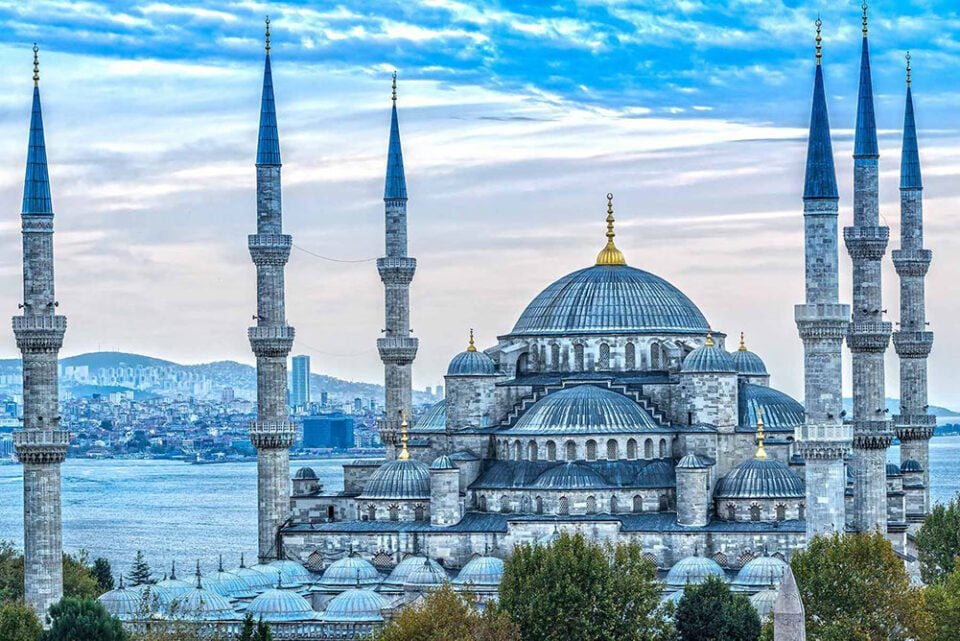Turkey is not just endless beaches, comfortable hotels, SPA salons with numerous healing procedures, modern shopping centers, and majestic skyscrapers. The history of this ancient country was shaped by past civilizations. Traces of their unique creations are found in every corner of the country.
Ancient cities, beautiful mosques, places where the life of the famous Hürrem Sultan took place, and unforgettable natural attractions are all worth seeing. This article provides information on what to see in Istanbul in 3 days independently, with a recommended daily sightseeing itinerary.
Day One
More than 3,000 architectural structures and monuments created by four empires are located in Turkey. The country’s main attraction is Istanbul, which has grown on both shores of the Bosphorus Strait, dividing Asia and Europe. The best achievements of the two parts of the world have formed this fairy-tale city. You can explore its historical sites on foot or use tram number 1.
Hagia Sophia
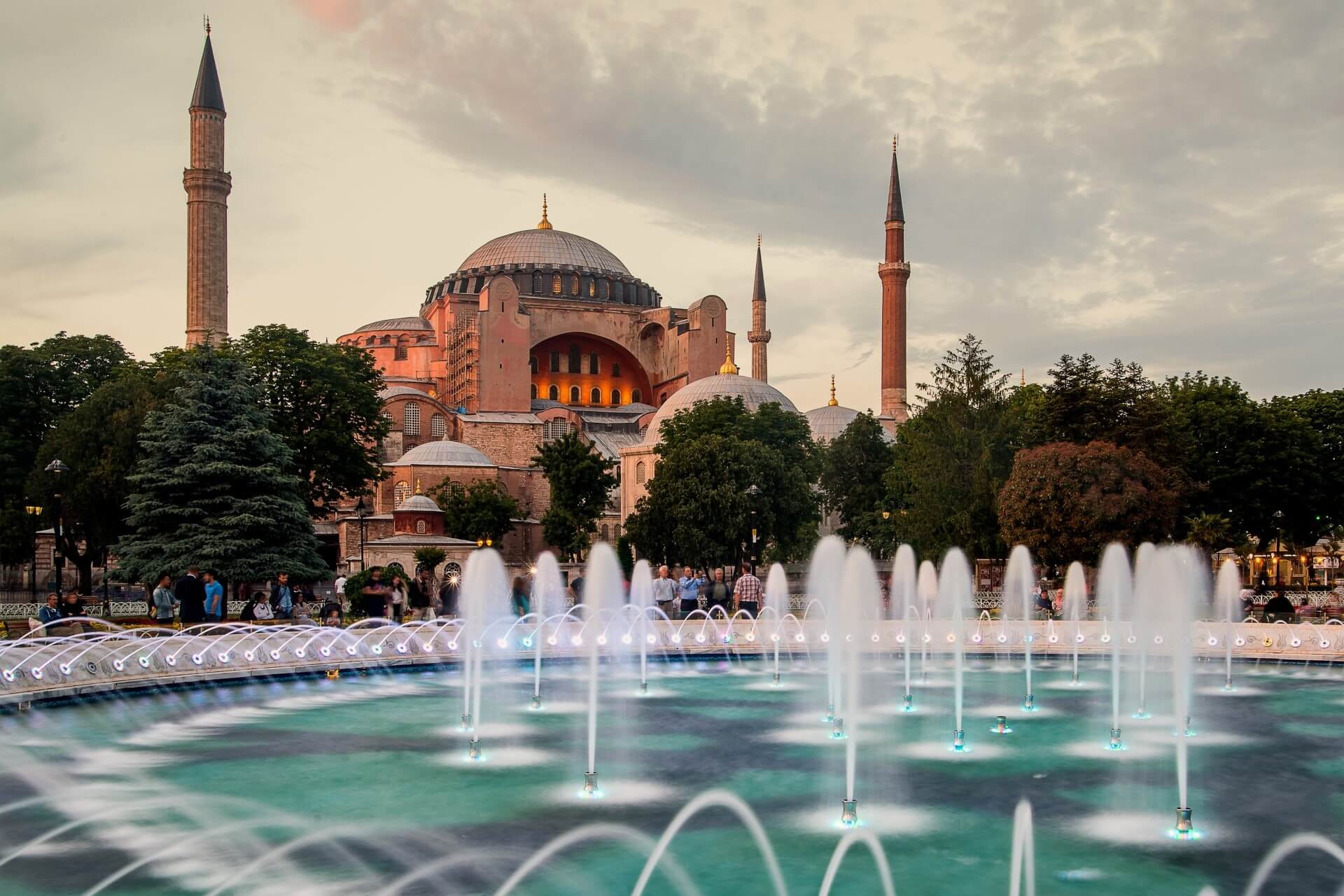
The historical center of the city is adorned by the main attraction – Hagia Sophia, also known as Ayasofya Mosque. This ancient monument of Byzantine architecture’s “Golden Age” has had a long history (since the 6th century AD), serving as a patriarchal orthodox cathedral, mosque, tomb, and museum (since 1935).
The monumental structure, surrounded by slender minarets, possesses an invisible aura and is considered a place of power. The cathedral was built during the reign of Byzantine Emperor Justinian I. Its walls are decorated with Arabesque and Christian symbols. The luxurious interior of the cathedral can be admired during visits. For almost 1,500 years, it symbolized peace between different religions.
The magnificent temple’s history included difficult moments, such as when Mehmed the Conqueror entered the holy place on horseback and ordered it to be converted into a mosque in 1453. The blood-stained handprint of the sultan remains on the altar. Now, by order of the current Turkish President Erdogan, the cathedral has lost its museum status and has been converted back into a mosque. For the first time in 86 years, traditional Friday prayers were held here.
Blue Mosque
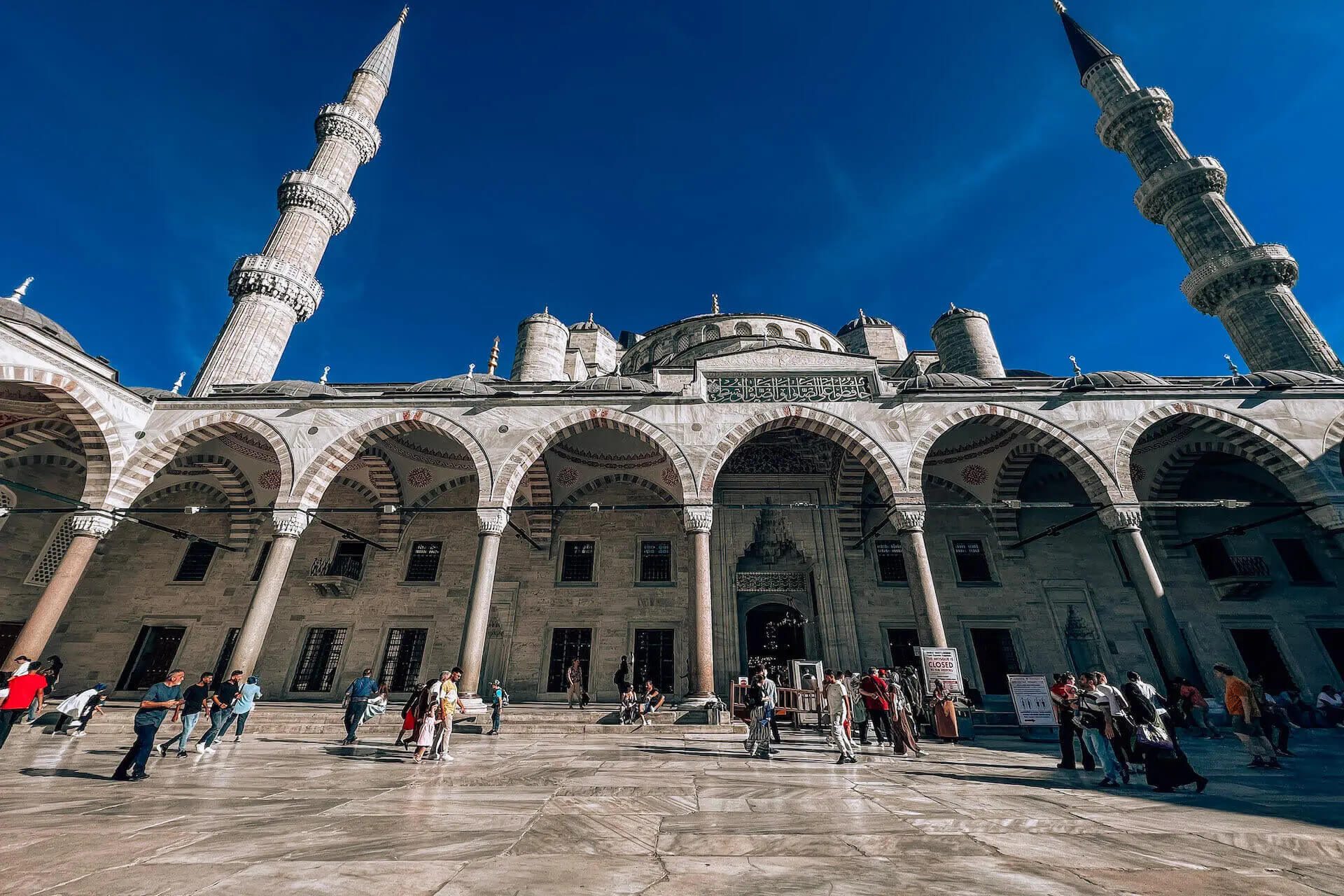
Opposite Hagia Sophia stands the magnificent religious complex of Turkey, known as Sultanahmet, Ahmedia Mosque, or the Blue Mosque. This example of Islamic architecture, with its six minarets and majestic dome, is clearly visible from the expanses of the Sea of Marmara and the Bosphorus Strait. The unique structure was built under the direction of Ahmed I between 1609 and 1616.
During this period, the ceramic industry in İznik flourished. The use of blue ceramics in the interior created an unusual atmosphere in the mosque, and it became known as the Blue Mosque. The interior is adorned with tens of thousands of unique blue ceramic tiles. Until then, only the mosque in Mecca had six minarets. There is no other complex like it in the city. The religious mosque is active.
During prayer times, tourists are not allowed (prayers are held five times a day). The best time to visit the interior and stroll through the beautiful courtyard is in the morning (free entry). Muslims and other believers can participate in prayers. Men pray on the lower level, while women pray separately on the second floor. Cameras and other devices for taking pictures are not allowed.
Hürrem Sultan Bathhouse
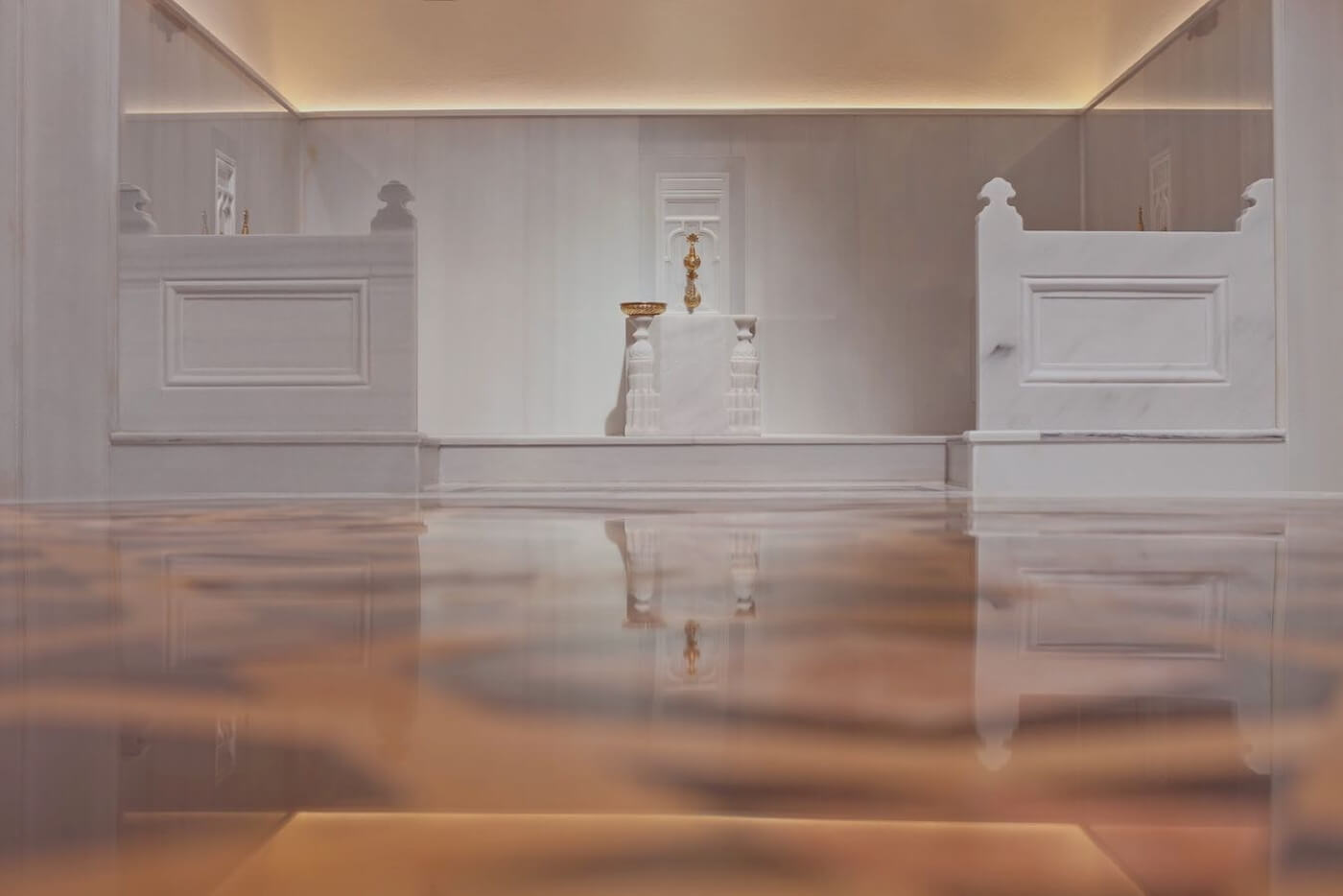
Between Hagia Sophia and the Blue Mosque is the city’s best bathhouse. It was built for Suleiman the Magnificent’s beloved wife, concubine Roxelana (Anastasia, Hürrem), in 1556. The historic baths were once the site of the great Zeuxippus Baths, built in the 2nd and 3rd centuries. They were destroyed long before the Ottoman Empire. The new building served as a prison, warehouse, and court.
Later, it became a gift for Hürrem, turning into a bathhouse and a popular city bathing place. The men’s and women’s sections mirror each other. Visitors can enter by prior reservation, following important rules for visiting the men’s or women’s sections. There are four service options for tourists.
The first 45 minutes involve washing with a rough mitt. Then, various procedures are carried out, including peeling, scrubbing, clay masks, and the famous foam and aromatic oil massages. The longest visit is a 110-minute ritual. At the end, you are offered Ottoman sherbet while wrapped in a large white towel provided at the entrance.
Islamic traditions prohibit visiting the steam room naked. Locals traditionally visit the baths in the morning, while tourists usually fill the hammam in the evening.
Topkapi Palace

On a high hill where the Bosphorus Strait meets the Sea of Marmara lies the ancient palace of the Ottoman Empire. Life existed on this cape next to the Golden Horn Bay during the Neolithic period. In 667 BC, Greek colonists founded a settlement here, and a palace grew on the cape, leading to the city’s name, Constantinople, the future Istanbul.
The country’s history developed here alongside 25 ruling sultans. The first stone of the modern palace was laid in 1459. The name Topkapi originated from the main gates of the old fortress, “Cannon Gate” or “Gate of Salutation.” These gates became the palace’s calling card. The octagonal towers of the gates housed criminals awaiting execution, which took place here, and the torture instruments and executioners’ rooms are accessible for viewing.
Local legends say the ghosts of executed people still wander the towers. Just beyond the gates lies the largest courtyard of the complex, Divan Meydanı. Underground passages from the palace, created by the Byzantines, still exist. Among the beautiful chambers, the love story of Suleiman the Magnificent and Hürrem unfolded. It became possible to see the interior buildings of the ensemble (including the harem) in 1924 when Topkapi Palace became a museum.
The first object of interest is the Church of Saint Irene, built in the 4th century on the ruins of the Temple of Aphrodite, which stood in ancient times. The oldest Christian basilica in the world has preserved the apse mosaic in the form of a black cross on a gold background. Among the museum’s thematic exhibitions, you can view the world’s richest collection of Islamic weapons.
Unique porcelain items made in different countries, the throne room of the palace, and more are available for viewing. The museum is open from 9 am to 6 pm.
It is recommended to combine visits to Topkapi and Dolmabahçe Palaces. To avoid queues, book a tour with an experienced guide. Our editor personally verified this tour and was highly impressed. Jesim is a fantastic guide and storyteller. Book the tour via this link.
Basilica Cistern
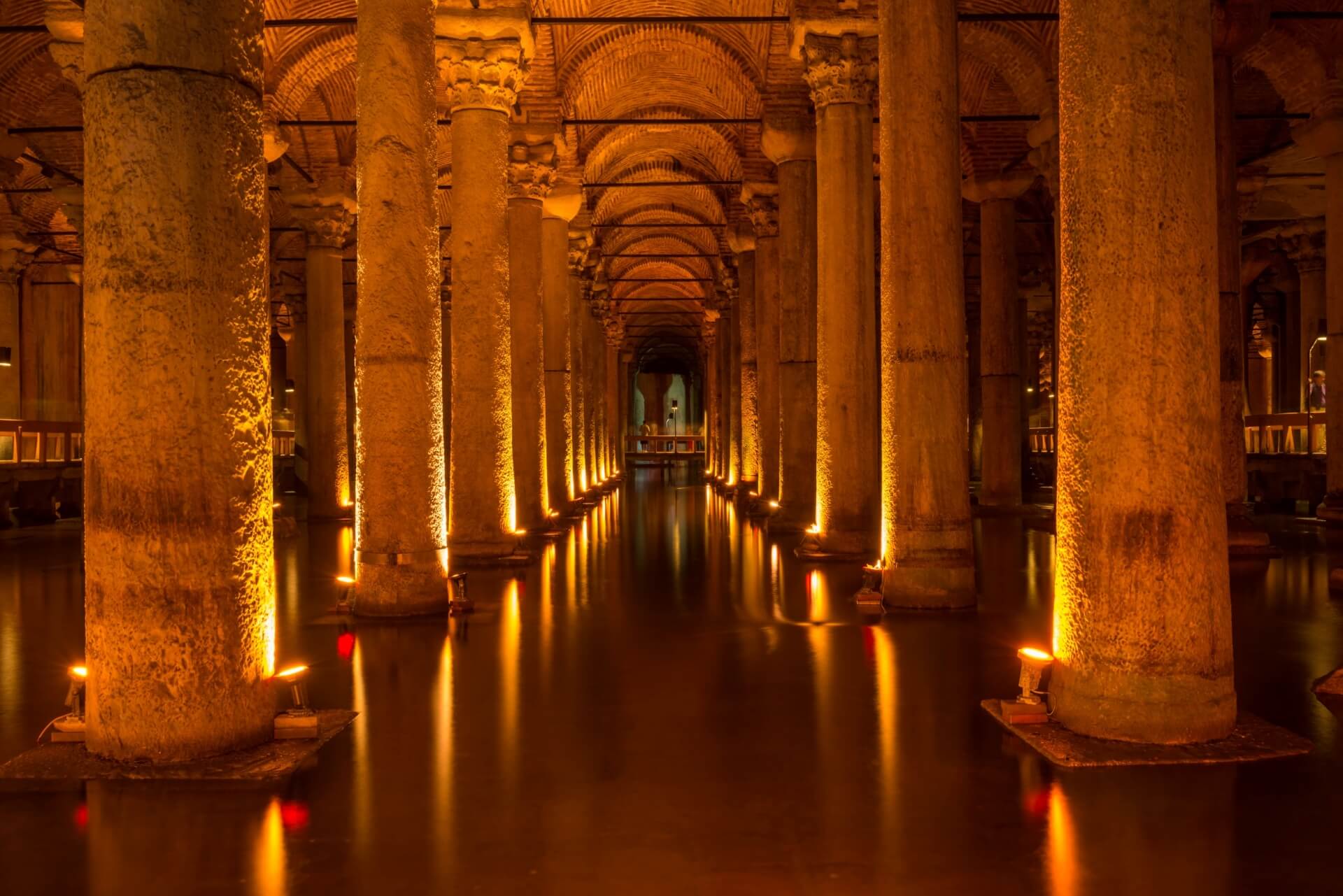
The city’s underground structures represent a separate, magical world preserving its history, shrouded in legends and myths. One such structure is the Basilica Cistern. The underground reservoir, created by the Greeks in the 4th century, resembles a mysterious palace hidden behind nine-meter columns (336 of them).
It stored drinking water, supplied via an aqueduct to the Sultan’s Grand Palace. Previously, the site was occupied by the Basilica of Hagia Sophia, hence the full name Basilica Cistern (Yerebatan). Its discovery is attributed to Dutch traveler Gyllius in 1550. While walking near Hagia Sophia, he was surprised to see locals drawing water and catching fish from mysterious underground wells.
Thus, the country’s landmark, confirming the ancient technologies and scientific achievements’ significance, was discovered by accident. In 1987, the ancient Byzantine architectural monument was organized into a museum. Walking on wooden bridges, visitors can observe swimming fish, throw a coin into the “Wishing Pool,” and gaze into the eyes of the terrifying stone Medusa Gorgon.
The underground kingdom’s unique acoustics, 12 meters deep, allow for classical and jazz music concerts.
Theodosius Cistern
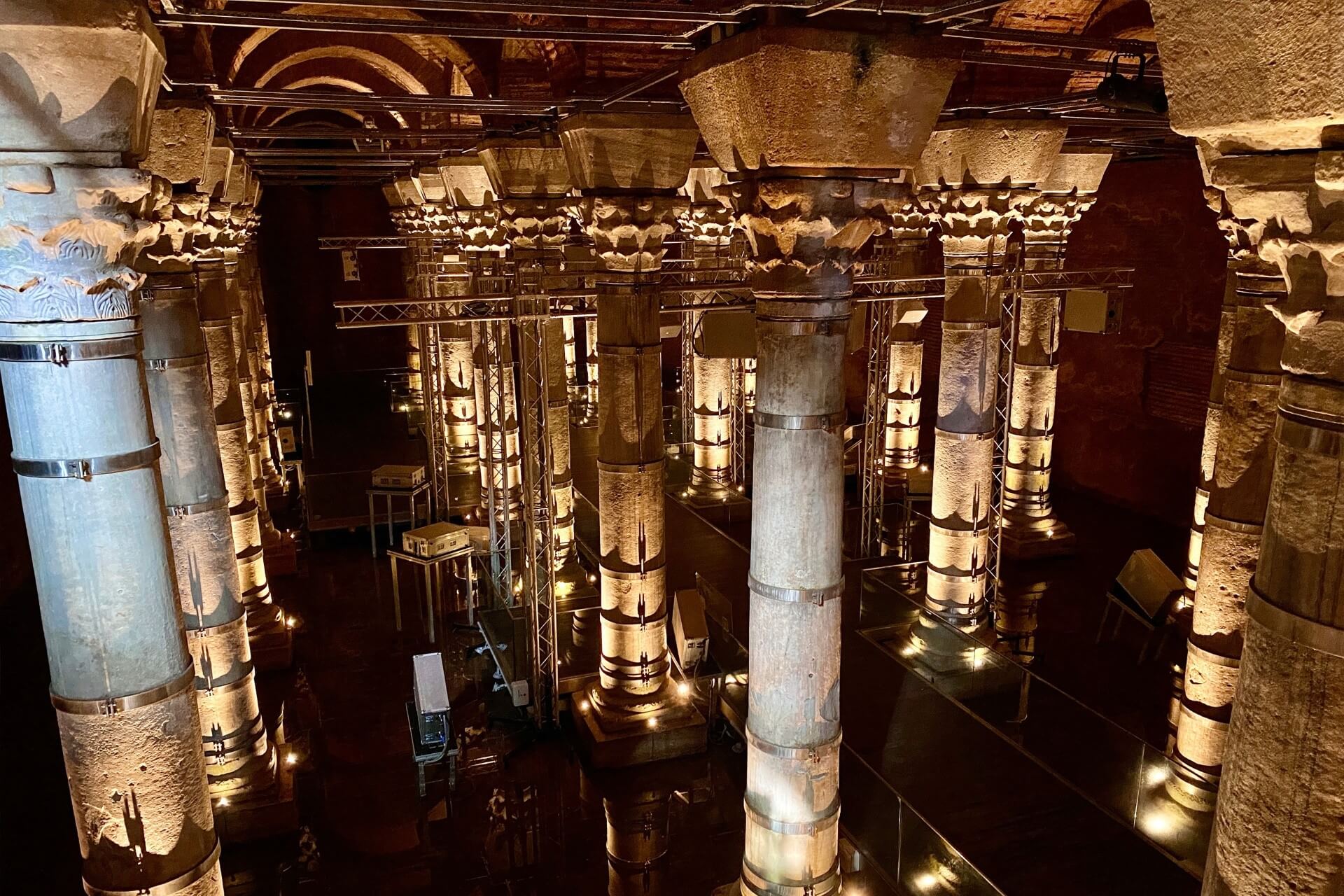
The 1,600-year-old underground reservoir opened to visitors in May 2018. It was rediscovered in 2019 during the demolition of the old Eminönü district mayor’s office. The UNESCO-protected site was free to visit until 2019. Now, a ticket is required. The underground structure is 100 years older than the Basilica Cistern.
Built during the reign of Byzantine Emperor Theodosius II, it was also known as the Constantine Cistern, and since the 19th century, as the Şerefiye Cistern. Water was supplied from the Valens aqueduct. After restoration, a new glass building was erected above the underground reservoir. In 2018, the Theodosius Cistern Museum opened here.
The museum’s information is filled with fascinating facts about the 40 reservoirs found in the city. It houses art exhibits and hosts classical music concerts. Acoustic concerts take place here on Saturdays, accompanied by unique light displays reflecting off the ancient walls.
Bosphorus Evening Cruise
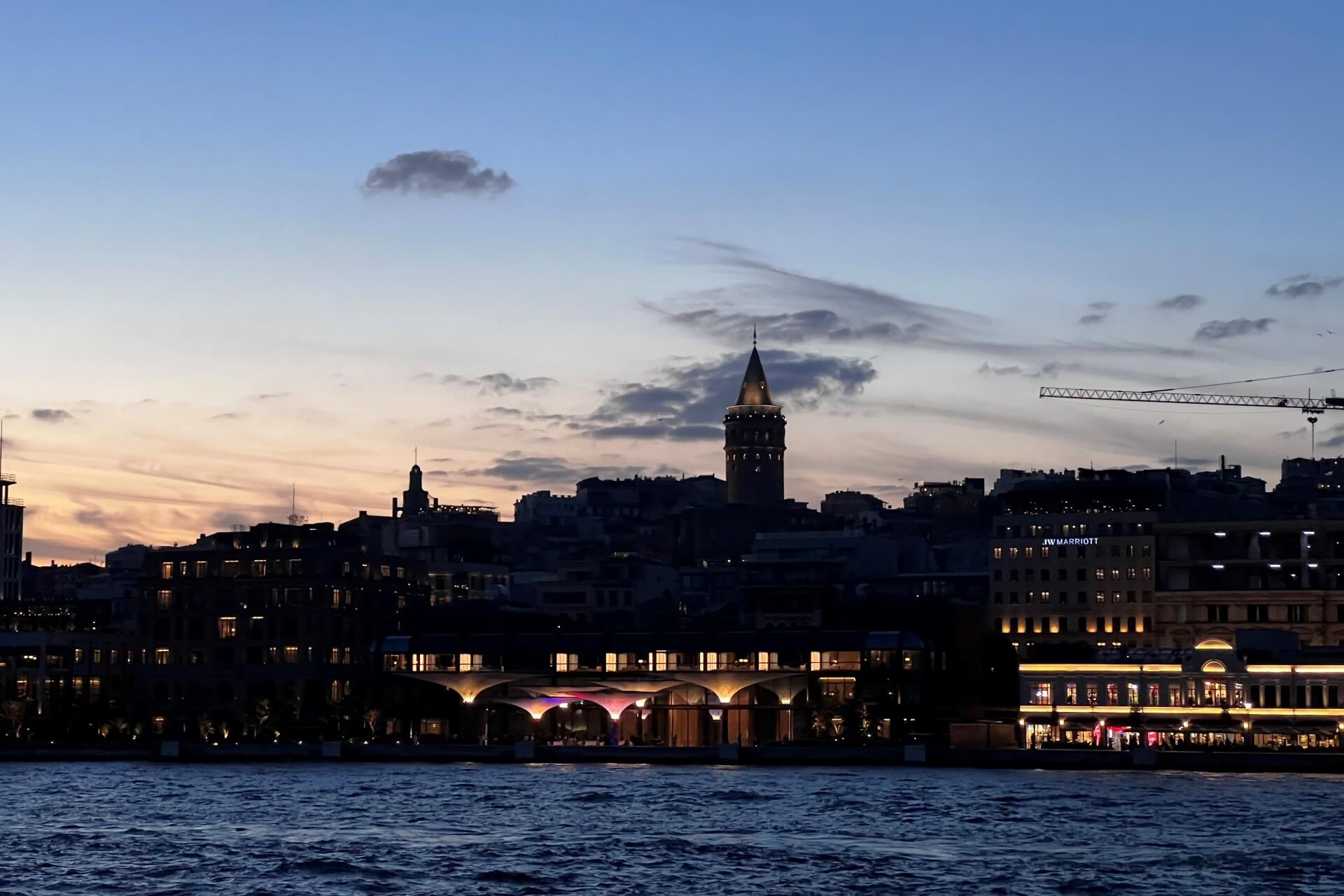
End your first day in Istanbul with a journey along the Bosphorus Strait. You can also have dinner during this time. From 7 pm to midnight, enjoy various entertainments, including traditional dances and an unusual wedding. There are many options for trips on comfortable tourist ferries.
For example, you can start your journey from the Eminönü waterfront and travel along the important shipping route connecting the Sea of Marmara and the Black Sea. Here is the detailed cruise schedule. The reflections of majestic palaces, mosques, luxurious mansions, and the city’s beauty from the ship’s deck are breathtaking. It’s best to sit on the left side of the ship.
Different options for night and day cruises along the ancient shipping route are available. One interesting option is a 6-hour trip with a 2.5-hour stop in the village of Anadolu Kavağı.
Day Two
You won’t have much time to sleep during the trip. You need to save time for further fascinating explorations of the city. It’s useful to know that breakfast here is also a kind of attraction. It follows the country’s customs, lasting almost 2 hours and consisting of numerous small dishes filled with delicious foods like cheeses, sausages, olives, fruits, honey, etc. If you hurry to the Karaköy Güllüoğlu pastry shop, you can try Turkish sweets like kadaif, şekerpare, and nuts in sugar.
Archaeological Museum
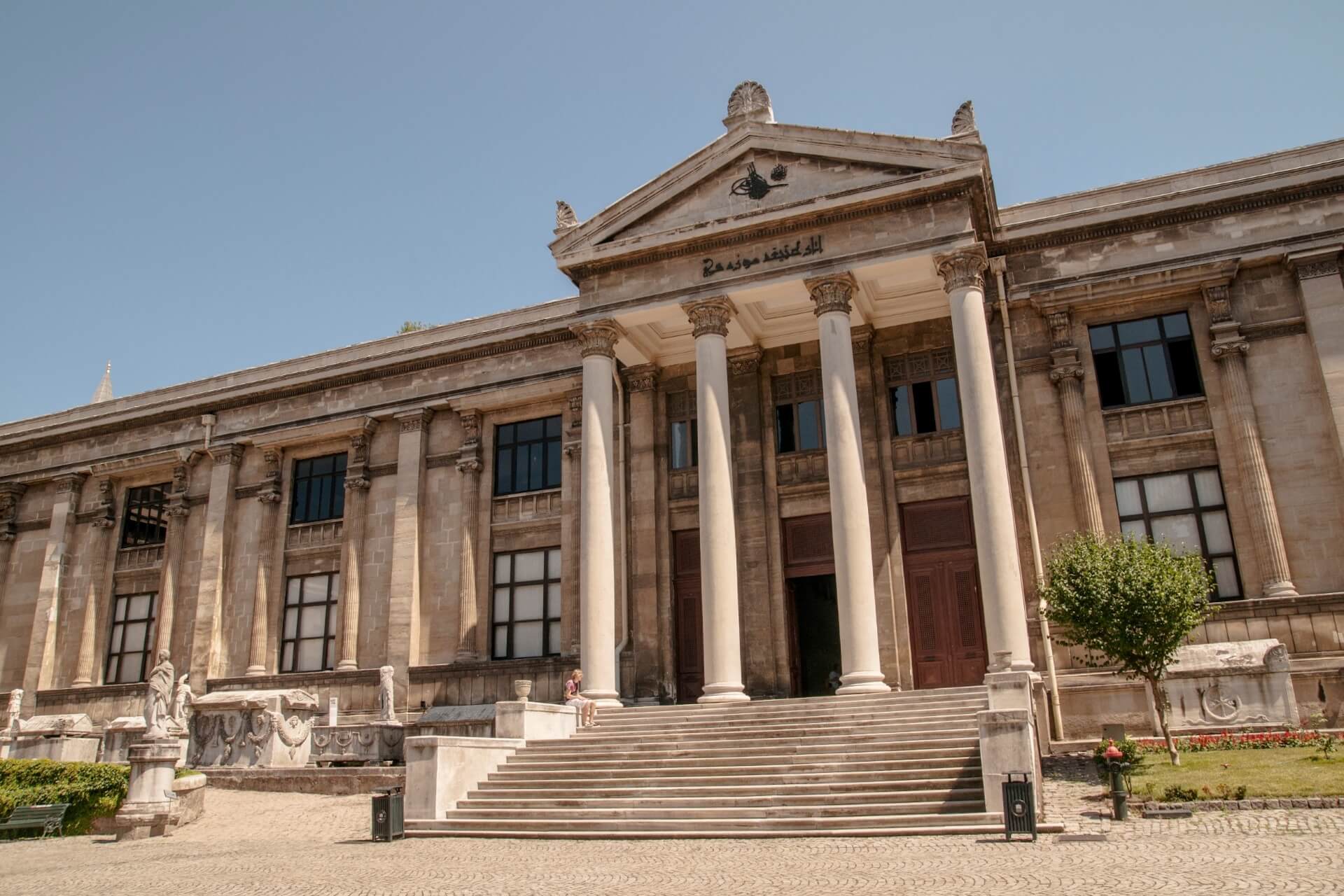
Allocate about 3 hours to explore the complex of three museums: the Tiled Pavilion, the Archaeological Museum, and the Museum of the Ancient Orient. The ensemble is located in the Eminönü district, near Topkapi Palace and Gülhane Park. The exhibits are accompanied by information in English. There is no audio guide. The museum is considered the main historical landmark of the vast city.
The gallery’s creation idea belongs to artist Osman Hamdi Bey, who fought for the preservation of Turkey’s monuments and artistic treasures. The first exhibit of future luxurious displays was a 5th-century sarcophagus. The building was called the Museum of Sarcophagi. Modern exhibitions contain over a million unique artifacts from different eras and cultures.
Among them is the original Sidon Sarcophagus, busts of Alexander the Great and Zeus, the Sarcophagus of the Mourning Women. Parts of ancient statues that adorned the Temple of Zeus in Pergamon, the snake column head from the Hippodrome square. The complex includes a café where you can rest and snack.
Mosaic Museum
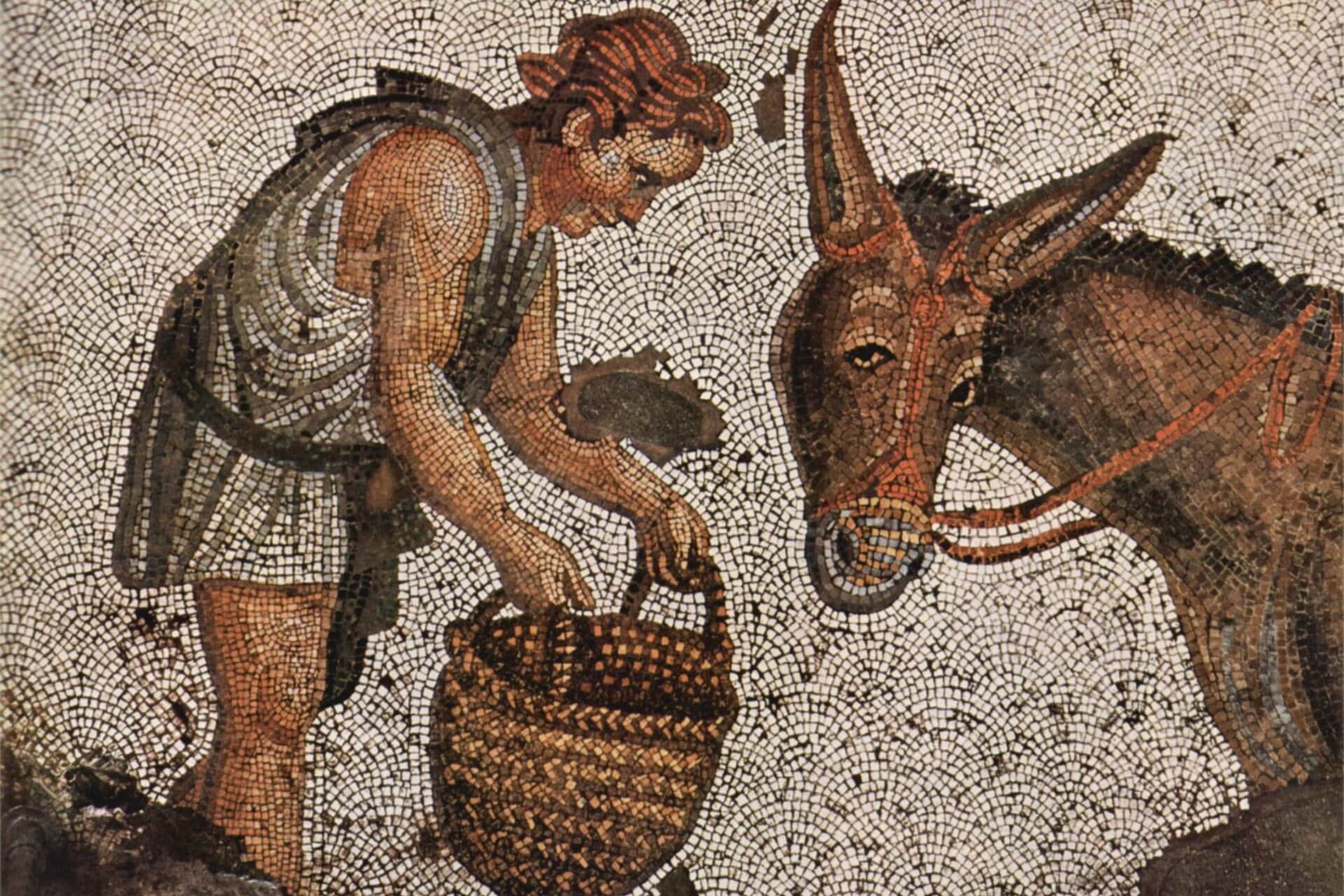
The history of this small mosaic repository began with excavations that revealed the floor of the ancient Grand Palace. It is believed that the mosaics decorated the palace’s pavement and the port of the covered gallery. Later, a market stood here, destroyed and looted in 1206. The modern museum stands on its site, and the first visitors saw the restored masterpieces in 1953.
The collection’s exhibits are in two small halls and date back to the 6th century during Justinian’s reign. The realistic mosaic themes are of an antique rather than Christian nature, depicting hunting wild animals, harvesting scenes, and participation in battles. The scale and quality of the mosaic panels, created by ancient craftsmen, impress with their uniqueness and beauty. The ancient floor fragments displayed in the museum are considered a wonder of the world.
Grand Bazaar
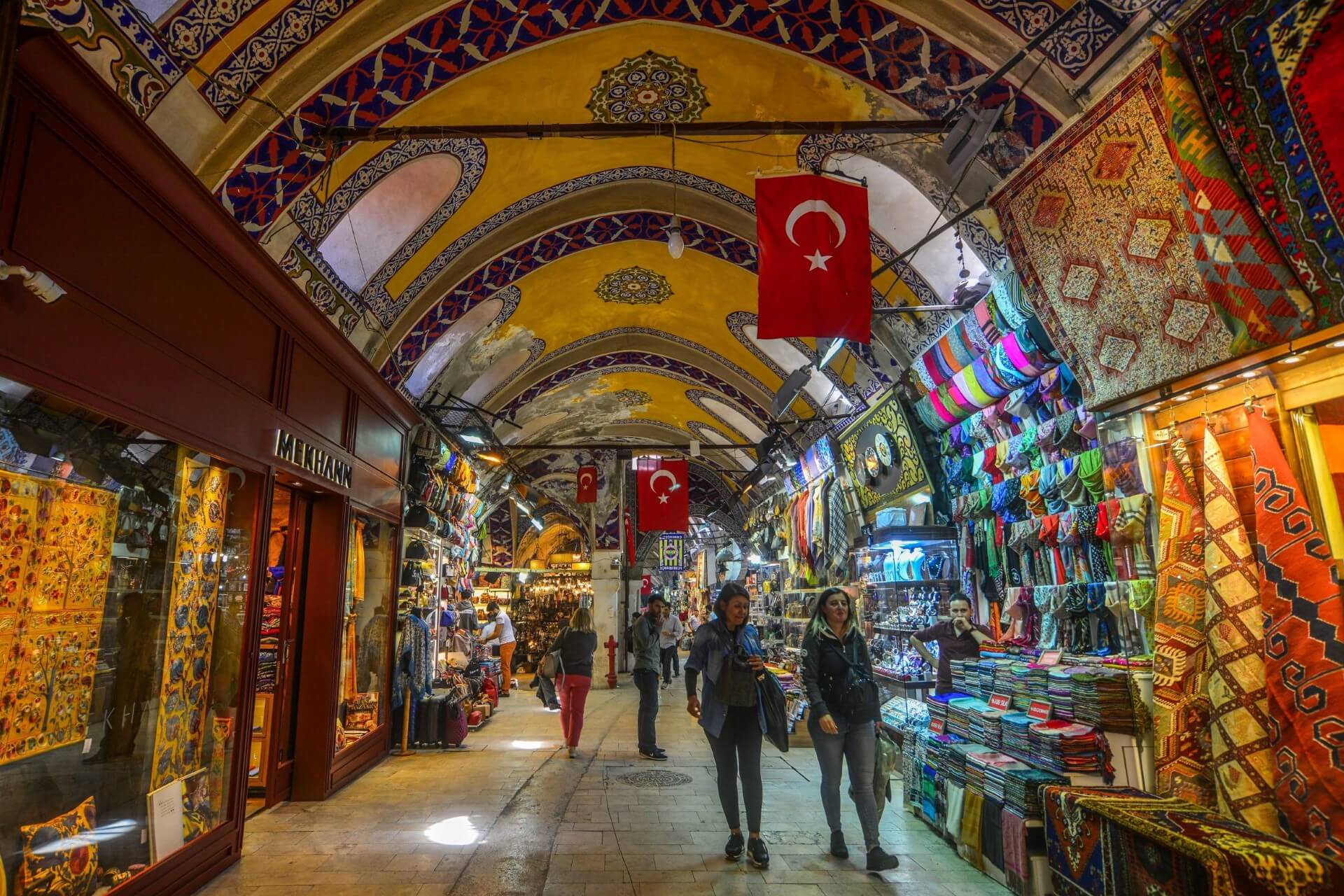
One of the world’s largest indoor markets is often called a “city within a city.” It has about 60 streets, 5,000 shops, over 200 workshops, mosques, 18 fountains with resting areas, cafés, and a school. There is even a cemetery within the Bazaar. The area is divided into two historical parts: the Sandal Bedesten and the Inner Bedesten.
The inner part is designed with traditional columns (8 of them) and 15 domes. Antique furniture, ancient items such as mirrors, coins, icons, and jewelry are sold here. During the Ottoman Empire, banks, stock exchanges, and trade and economic deals took place on the market square. The Grand Bazaar has 18 gates. The central gates, or Nuruosmaniye, are in the Moorish style and are considered the most beautiful.
In earlier times, the gates were open from “sunrise to sunset,” giving the market its name Kapalıçarşı, or Covered Bazaar. The market’s history, where slaves and valuables were traded, is full of interesting facts. Today, it is a true treasure trove where you can buy everything from expensive antique items to costume jewelry, ceramics, carpets, and fabrics.
Goods are arranged in specialized quarters (Jewelry, Bracelets, Carpets, Leather, Furniture streets, etc.). The bazaar is open from 9 am to 7 pm. Sunday is a day off.
Suleymaniye Mosque
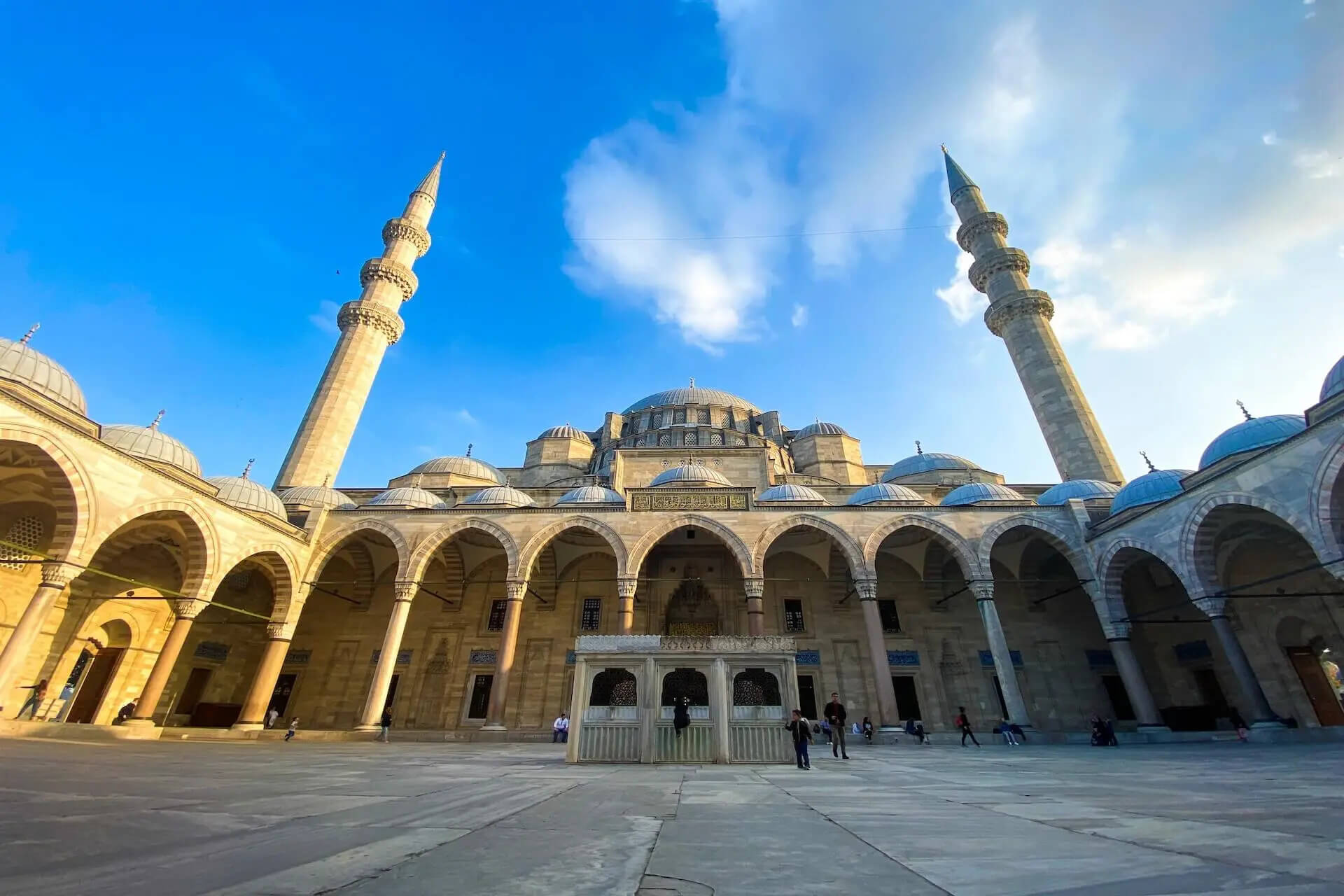
On one of the hills in the Old City lies the largest and most beautiful mosque in the city – Suleymaniye. It was built by order of Suleiman the Magnificent in 1557. His reign lasted 40 years, during which the Ottoman Empire reached its peak. The mosque’s unique structure confirms the empire’s greatness and significance, accommodating 5,000 worshippers.
The unique building elements with perfect forms reflect significant events of the ruler’s reign: 4 minarets denote the fourth sultan of Istanbul (Suleiman), and the number of balconies signifies the dynasty’s succession (10 of them). The beautiful interior stained glass windows were created by a master nicknamed “Sarhoş,” meaning “intoxicated.”
The mosque complex includes several buildings of different purposes. Here, on an ancient cemetery, lie the tombs of the sultan, Roxelana, their daughter Mihrimah, and subsequent rulers Ahmed and Suleiman II. Each tomb has nameplates with ancient drawings. Hürrem and Suleiman’s tombs are built as octagonal mausoleums. Their interior decoration can be viewed through a window. The mosque is active, with regular services.
Taksim Square
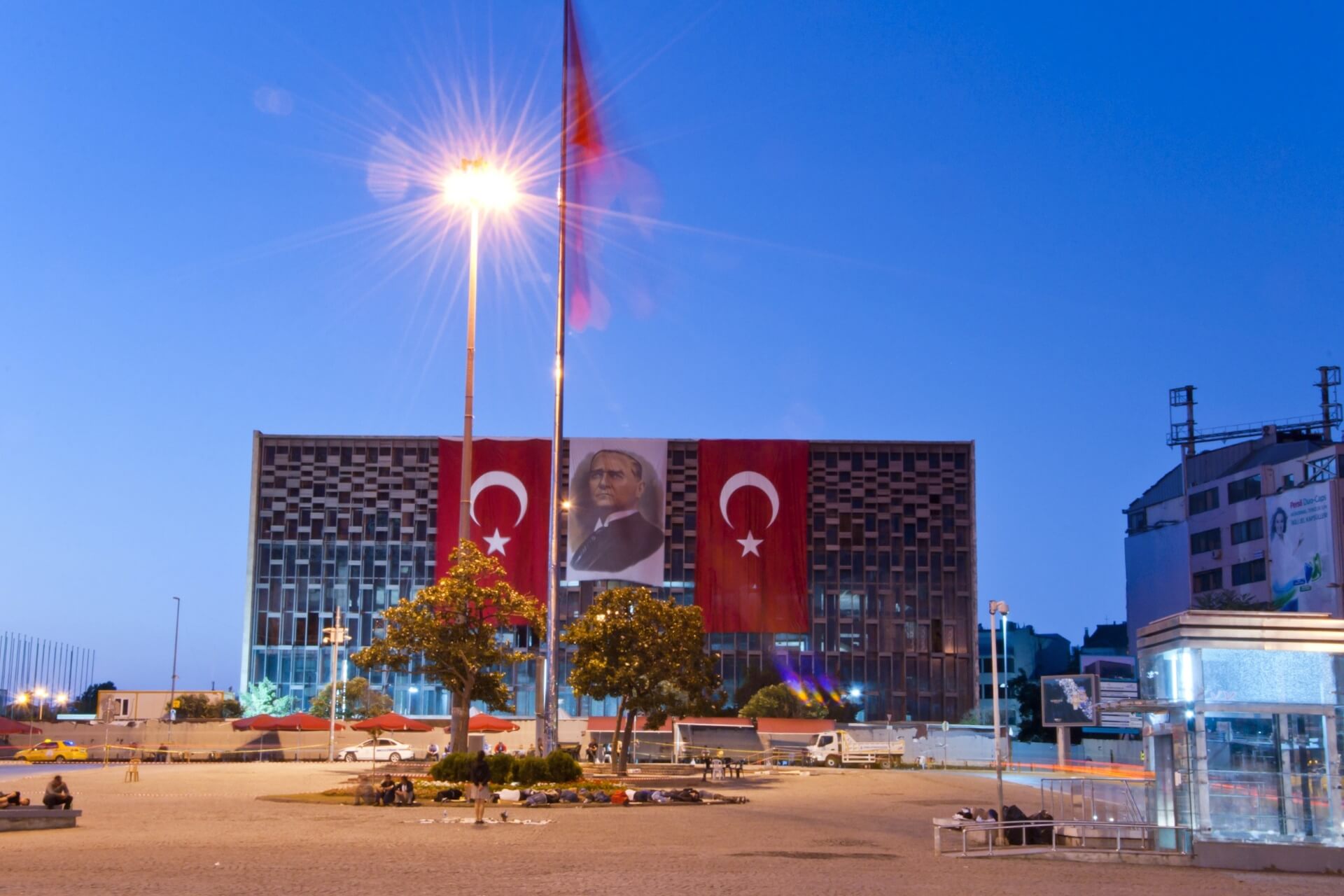
Every city has a square where festive events and New Year celebrations are held. In Istanbul, it is Taksim Square, once part of the Ottoman Empire, marking the boundary between the old districts and modern quarters. Here, you can see historical landmarks, relax in restaurants and cafés, and choose the most convenient hotel for your stay.
Many interesting streets start from the square. In ancient times, the area was occupied by an Armenian cemetery founded by Suleiman I in the 16th century. Another tragic fact in the square’s history is the shooting of peaceful protesters during the 1977 demonstrations. The word “Taksim” means “distribution,” as water was distributed from here to the city’s water supply.
Nearby stands the Church of the Holy Trinity. In the square’s eastern part, the Atatürk Cultural Center hosts concerts, thematic exhibitions, and opera performances. The Republic Monument, erected in 1928, adorns the square.
High above, the monument depicts the founders of modern Turkey. You can walk or ride on the historic tram through the square.
Istiklal Street
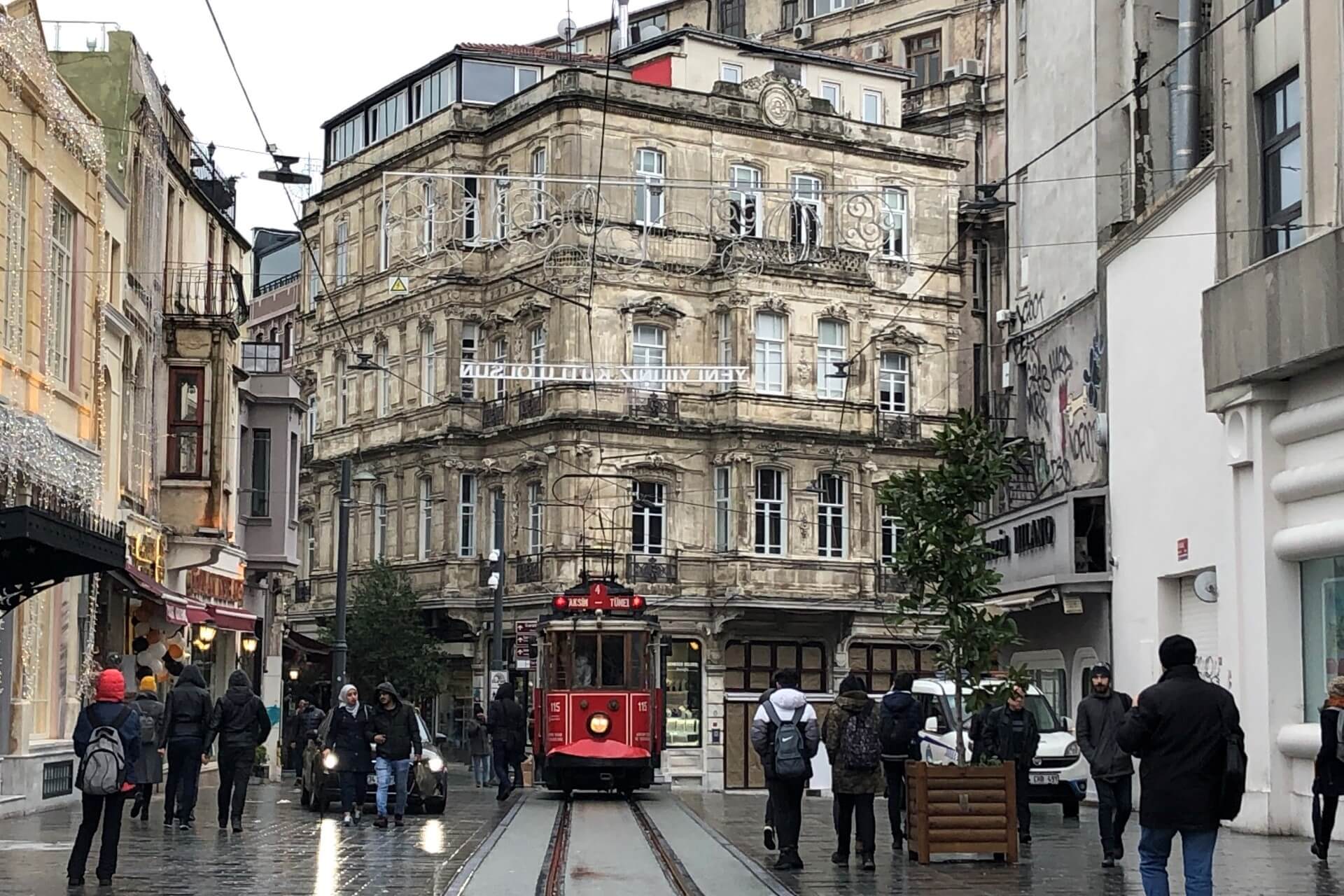
This classic pedestrian street, whose name means “Independence Street,” has a boomerang shape with a bend at Galatasaray Square. It is 1.4 km long, representing a typical European district. Foreigners built houses, opened shops, and workshops here. The street retains ancient buildings like churches and mosques, while nearby, the nightlife thrives in clubs and restaurants.
They say this is the place where East meets West. And beneath the street, an ancient metro with two stations still operates. A century ago, it was considered the second oldest in the world. The street is always bustling, with street musicians performing.
If you have little time for walks, ride the retro tram that began its route in 1871 and is now a city landmark. Start your walk after exploring Taksim Square.
Galata Mevlevi Museum
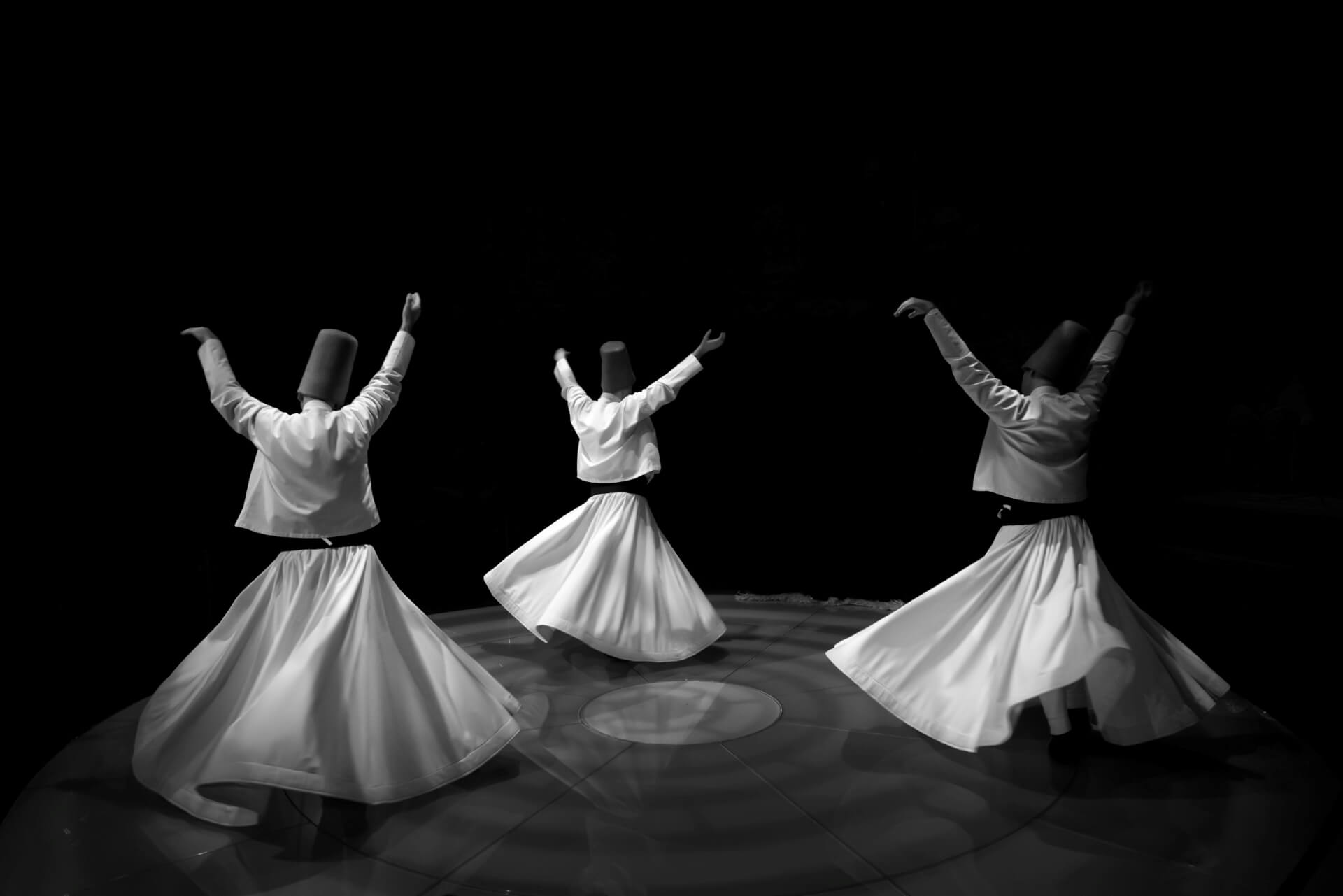
Among the many museums, there is a special one: the museum of whirling dervishes. Visit it to learn about the unique lifestyle and traditions of religious order members. The building served as a “dervish lodge” or a residence for religious community members for a long time. It is one of the oldest Muslim organizations, uniting followers of Persian poet Rumi (Jalaluddin Rumi).
The order’s center remains in Konya, where its laws, rules, and specific ritual customs are observed. One of these customs has become the museum’s main attraction: the performance of the dervish ritual dance. In the museum’s luxurious hall, a special show is organized, where a magical whirl of white skirts mesmerizes the audience.
Each movement of the demonic dance has its meaning. The dervishes’ ecstatic religious trance fills the room, captivating everyone present. The museum’s exhibits include many items demonstrating the monks’ everyday life. A separate hall is dedicated to ancient printing elements.
Galata Tower
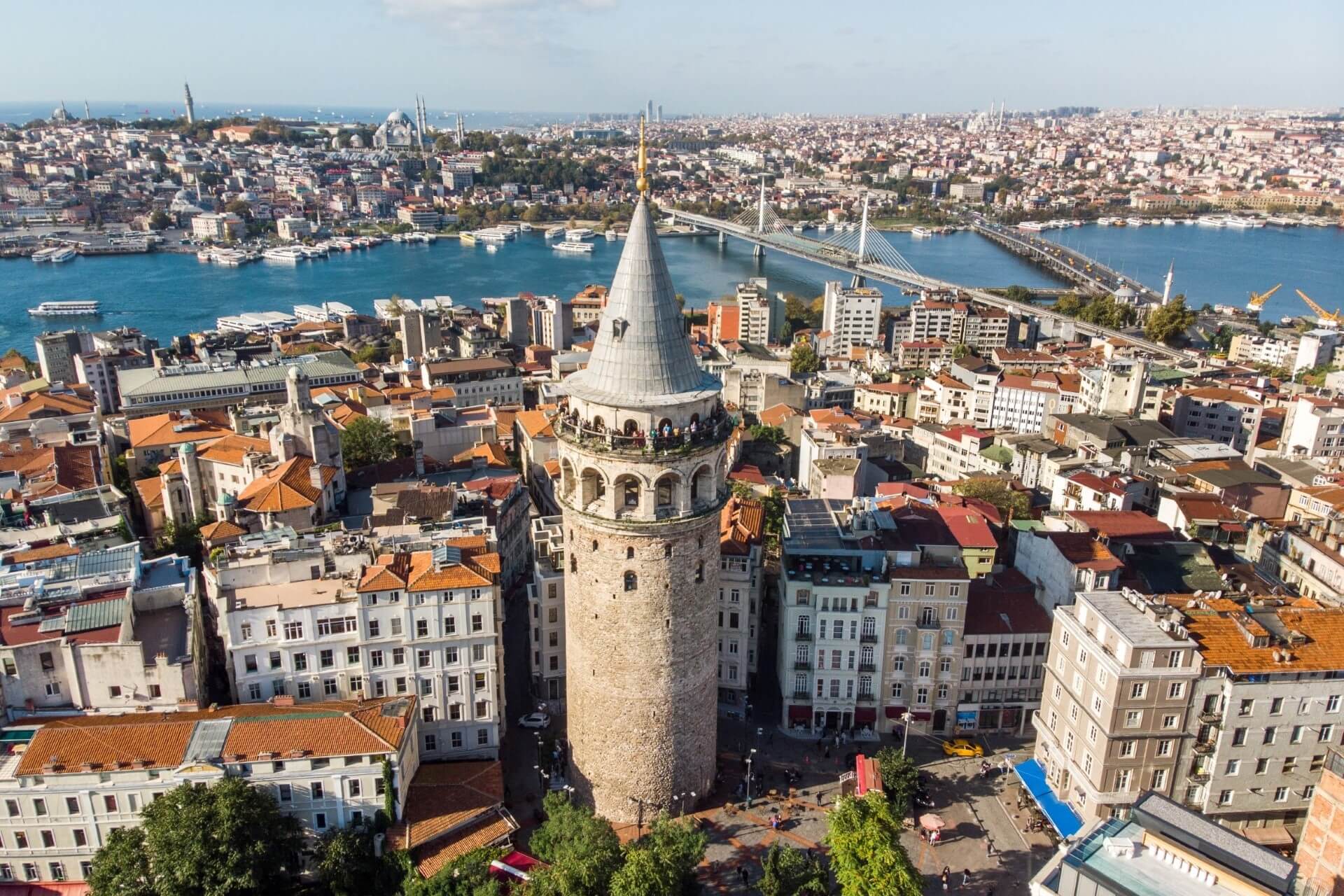
One of the city’s famous symbols is the “Tower of Christ.” It appeared amidst the impenetrable forests of Galata Hill in the mid-14th century. The Genoese built it on the site of an old 5th-century building to mark their new conquests of Constantinople.
The tower walls housed an observatory, a fire lookout, and a lighthouse. Today, on the 9th floor, there is a popular restaurant and the best observation deck. The entire city, with its mosques, bridges over the Bosphorus, and streets adorned with colorful lights, unfolds before the amazed eyes of observers. You can ascend it (from 9 am to 8 pm) by modern elevator or ancient stone steps to hear the mysterious melody of antiquity.
Day Three
Although the tight schedule of exploring the city is complete, the last day is the most eventful and challenging. Hundreds of interesting places remain unvisited, occupying an important place in planning future trips to the country. To make the most of every minute, pack your luggage, take it to the airport, and continue your journey.
Kadıköy District

A visit to the trendy Asian part district is recommended by ferry. There are no outstanding historical monuments here, but among ancient Byzantine monasteries, wooden houses of Greek families, and groves with figs, a cozy, calm atmosphere reigns. The sounds of cars are absent (they are banned on the island), and only the distant clatter of horse-drawn carriages can be heard.
In small cafés, you can relax, try Turkish coffee or previously unknown fruits (sold year-round), and pet the numerous cats. Stroll along the waterfronts, breathing in the special air of freedom, watching young people in bright clothes and green hair hurrying to educational institutions. Dream that on your next visit, a bit of the ancient country’s mysteries will be revealed: the lost cities, underground dwellings, and Mount Ararat.
Princes’ Islands
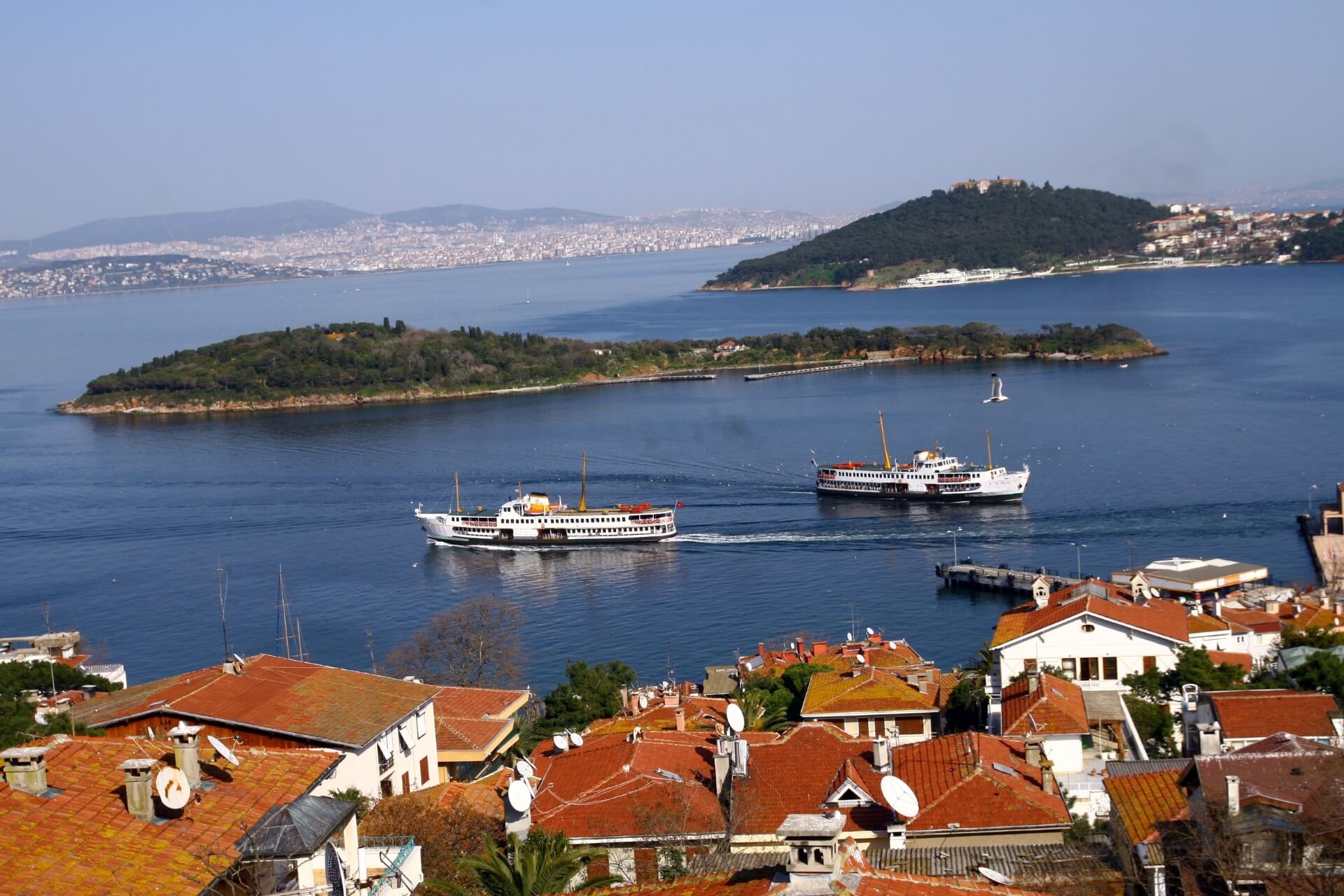
On the last day of your journey, you can take a ferry from the Kadıköy pier to the Princes’ Islands. There are nine islands in total, but tourists are allowed on four. This quiet, beautiful place without the noise of cars and the hustle and bustle of people is best visited on weekdays. On weekends, residents flock here to enjoy the beauty, fresh air, and tranquility, free from the tourist crowds.
These small, cozy pieces of land in the Sea of Marmara are known as places of exile for princes’ families during the Byzantine Empire. Houses, churches of different religions, and other buildings from those distant times have been preserved. It is recommended to visit the largest island, Büyükada.
How to Get from the Airport to the Center
Knowing the best and most cost-effective way to get from the airport to the city center is valuable information for your trip. The former Atatürk Airport closed in 2019.
You can use the H transport route from the IETT public network or the IST bus route from Havaist company. The trip takes about an hour. You can also take a taxi, booking it in advance when purchasing your ticket or at the airport.

